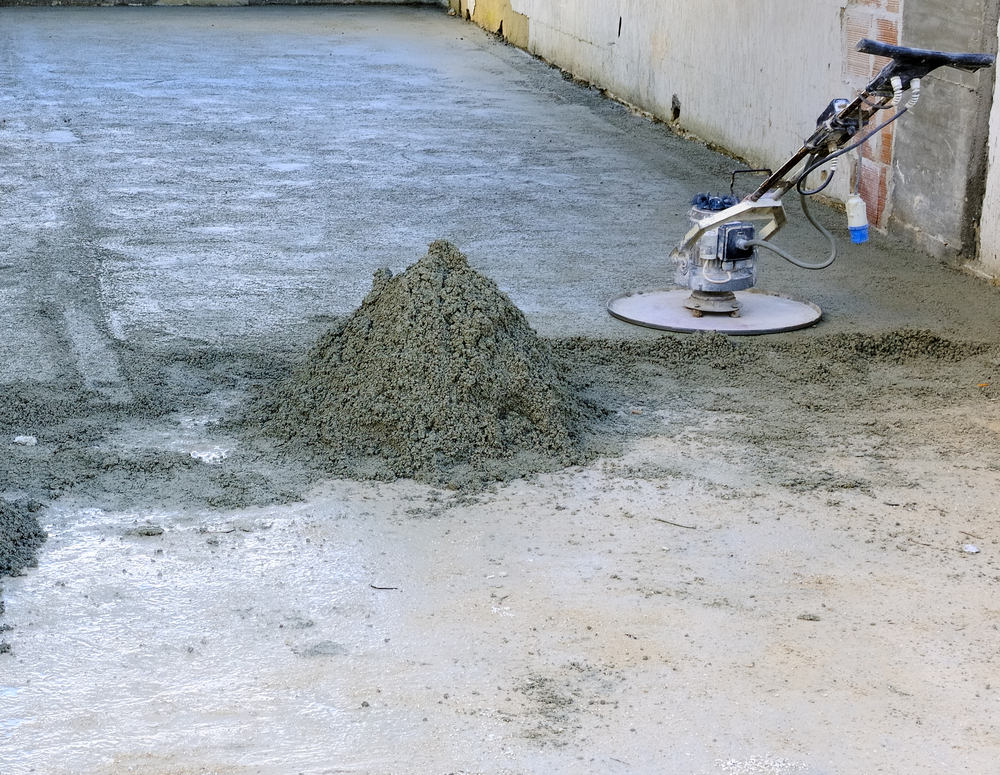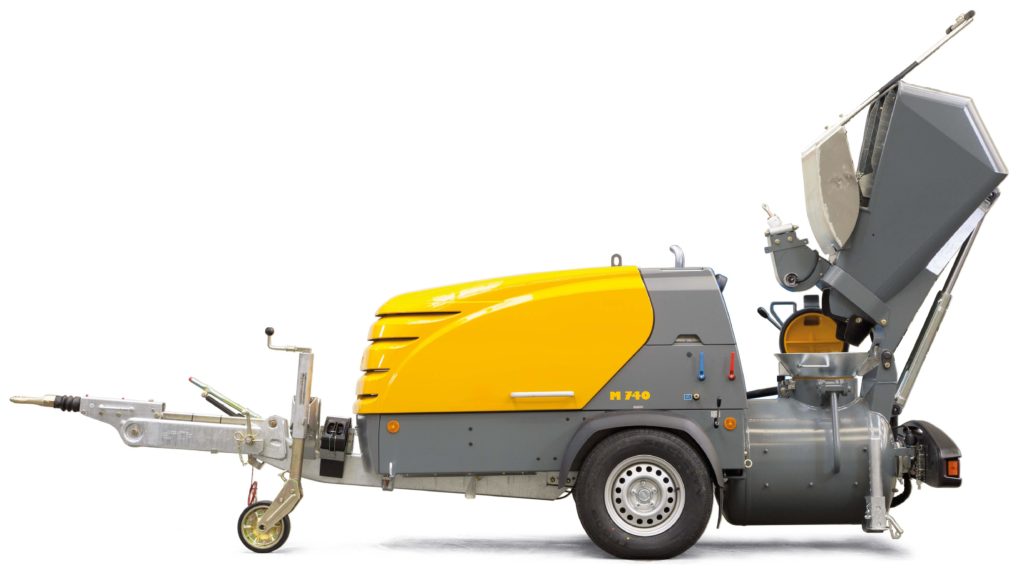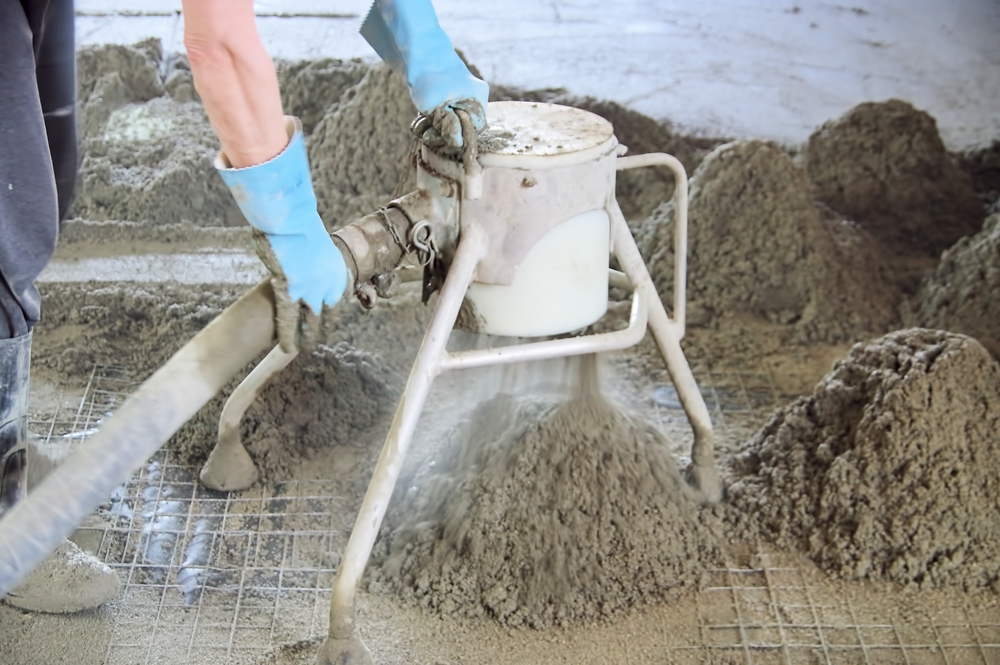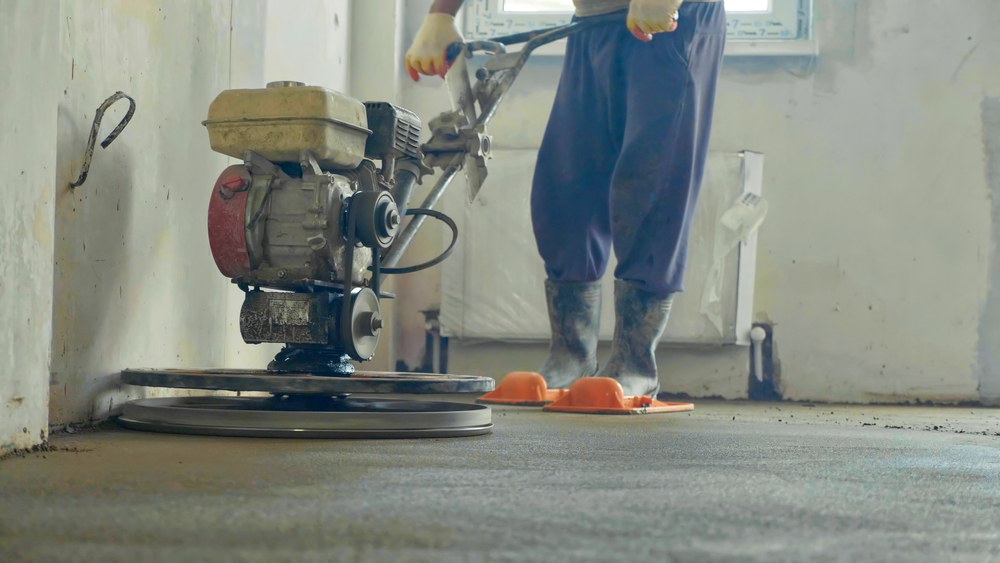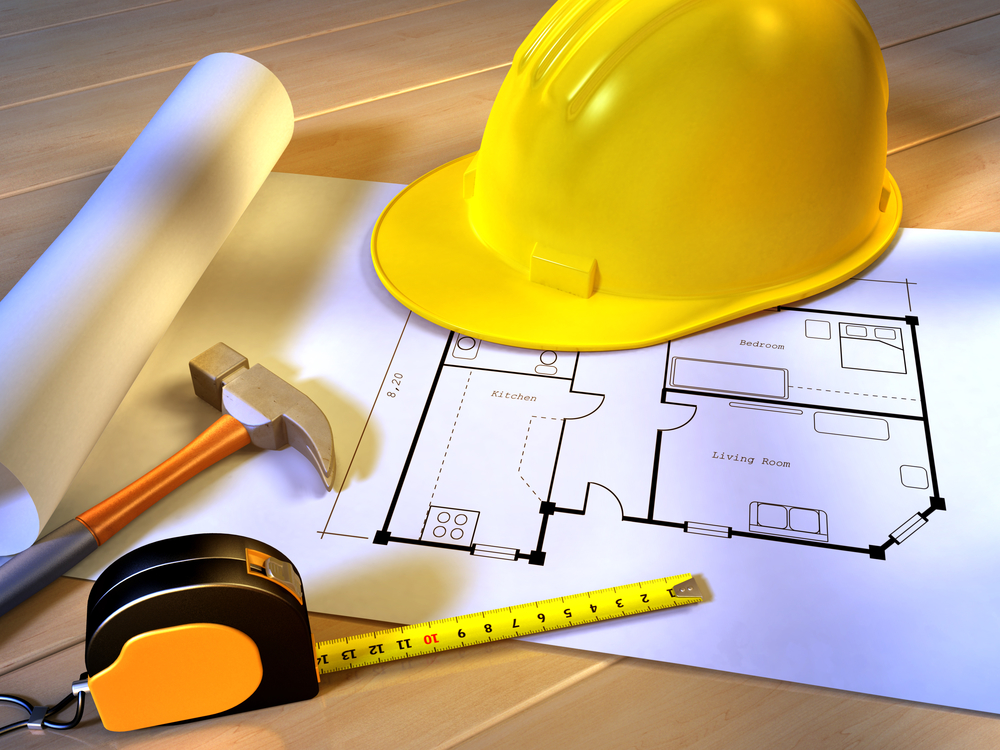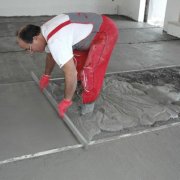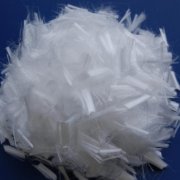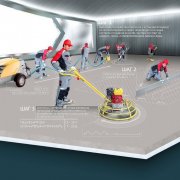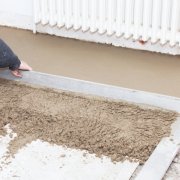Mechanized floor screed: technology description, advantages
Anyone who has faced with the arrangement of the floor structure during the repair, understands the importance of laying the leveling layer. In addition to improving surface reliability, screed will help to evenly distribute the load between the layers, that is, to extend the life of the floor. Wet screed is made with sand-cement mixture or concrete, dry - with ready-made mixtures. Alignment has traditionally been manual labor, but process automation and technology development has led to the emergence of a new concept. This is a floor screed in a mechanized way, in other words, using special equipment. In this article, we will find out when it is more convenient to perform leveling in the old fashioned way and in which cases a mechanized floor screed is preferable. And also, what equipment will be required for this.
The content of the article
Benefits
A mechanized screed would not have strengthened in the short term so firmly in the services market if it had not possessed a number of advantages. Consider the arguments for leveling the floor with specially designed equipment. When kneading the mixture for mechanized pouring floors, water is added less than for manual, from which the first block of advantages follows:
- cement dries faster and more evenly, achieving brand strength in a shorter time without losing the required level of hydration;
- stepping on the screed without risk of damage is allowed after 48 hours, and on the fifth day after pouring, it is permissible to begin the installation of the finishing decorative coating;
- a solution containing a minimum of water is characterized by reduced fluidity and will not damage the repair of neighbors from the lower floors, penetrating through the floors.
Also, among the advantages of screeding, the speed of execution and the reduction of labor costs are called a mechanized method - only a few people working as a team in one shift can complete a volume that is manually delayed for almost a week. This means that you do not have to wait long and hire additional employees.
Components mixtures - cement, sand (or sand screenings) and microfiber - They are inexpensive and it is easy to purchase them in any locality. No exotic and long waiting for supplies. Shrinkage of the material is not observed, there are no minor defects inside the screed that are invisible to the eye either, cement dust does not swirl throughout the house when mixing the mortar, as it occurs outside.
If an automatic screed stacker is among the equipment used, the floor surface after mechanized leveling is ready for finishing work on laying the final coating, no additional processing will be required.
And, finally, the last, but not least, advantage: ease of control with special technical devices of the floor level and angle, if any, is provided for by the floor plan. This will not affect the quality of the mechanized screed.
disadvantages
For a fast and even one you have to pay more, because buying or renting the necessary equipment is expensive. And it is not possible to work on it independently without knowledge and experience, hence another expense follows - payment for the services of an invited specialist. Another way is to contact the construction organization, which will put both the equipment and the workers at the disposal of the client.
But many companies do not take up small areas, limiting the minimum footage available to order.Then, if a mechanized screed is the only suitable option, you have to look for with whom to unite. It is quite easy to find neighbors who also need a screed, in a new building without finishing, in other cases, the probability of finding nearby “colleagues” is very small. Thus, although the advantages of screed in a mechanized way are incomparably greater than the disadvantages, circumstances often do not allow, with all the desire, to fill the floor with the help of technology.
Equipment
Large construction and repair organizations have multifunctional stationary installations in their arsenal. In addition to the manufacture and supply of mortar for mechanized filling of the floor, they also have a plaster mixture for walls. The package includes electro-hydraulic loaders, concrete pumps and flexible wear-resistant hoses. We will not dwell on stationary installations in detail, since mobile ones are used to repair small rooms.
These are the units placed on the chassis of a concrete mixer, also called pneumosuperchargers. Such machines knead the mixture for pouring on the basis of a mixer, with four blades in a tank of sheets of steel and iron with a capacity of more than 600 liters. For tight closing of the drum, when mixing is completed, a valve is provided. The homogeneity of the composition and the cooking speed with a mechanized method of mixing, of course, is higher than with manual.
To ensure the flow rate of the solution up to 5 cubic meters per hour, you need a powerful compressor. Sometimes it is included in the basic design of a pneumosupercharger, sometimes it is installed separately. The air pumped by the compressor into the tank exerts increased pressure on the mixture, pushing the solution into the hoses, which saves the time and labor of the workers on delivery to the venue of the mechanized screed.
If the solution will simply come out of the hose under the influence of the excess pressure created by the compressor, then with jerks, abruptly. In order for the mixture to flow uniformly and stably, a damper connected to the hose is used. It is a pressure reducing device that is the opposite of a compressor.
Laser levels with mechanized floor screed come in line when it comes time to put beacons or check the level of the screed. The smallest margin of error is rotary apparatus.
The rule is a tool leveling the mixture between beacons; it is used when filling both manually and mechanically. When laying beacons, the step between them is correlated along the length of the rule in order to abut the edges. There are special caps for cushioning, so you can not scratch the surface during the distribution of the solution.
Smoothing the mechanized screed with a smoothing machine helps to level the mixture for pouring, increase the density of the surface and get rid of small defects in the form of bumps and microcracks. The second name is trowel. It is a disk device with a vertically mounted motor on the handle. On the market are varieties classified by type of work, differ in size, weight and engine power.
Unfortunately, in the premises such a machine does not reach all corners and inaccessible places, then they use a trowel that performs the same functions, but with the ability to penetrate to a half-meter depth.
To cut the expansion joints, specialists use a metal skate. This is an aluminum tool on a wooden handle, designed to protect the rough floor during temporary deformation of the poured layer.
Technology for mechanized floor screed
The first stage of mechanized filling of floors, like any construction process, is the preparation of the foundation. The scheme is the same as for the manual method.Clean dust and debris from the subfloor, check the surface for integrity. Fill the cracks detected during the test with a solution, then prime the surface in 1-2 layers. If insulation is provided, a layer of substrate or film is laid. A foam polystyrene tape that protects the walls and floor structure from the effects of concrete deformation during solidification is glued along the perimeter of the walls with a margin. Cut off the parts of the damping tape protruding above the surface after finishing filling the floor mechanically, when the layer is dry.
To determine the height of the screed, mark the zero level of the floor with a laser level. This is a horizontal line showing the highest point of the floor structure. Now you have to calculate the thickness of the screed, which directly depends on the thickness of the decorative coating purchased for this room. If the same flooring is provided for the entire house or apartment, this simplifies the matter. If different for different rooms, you need to adjust the thickness of the fill for the finish. The thicker the final coating, the thinner the layer of mechanized screed in this room. When the height at which we will fill the solution is determined, this segment is set aside from the zero level and is marked on the wall. Before you start the mixture for pouring, it remains only to establish beacons.
Let us dwell in more detail on the order of mixing the components of the solution. The first to get into the installation tank is sand, followed by microfiber, cement. And only the last thing they add is water containing a plasticizer. The key to the preparation of a homogeneous mixture, from which a strong screed is obtained, is the observance of the proportions of the ingredients and the temperature regime (not colder than 5 degrees Celsius). A blower will take 3 minutes to mix. Now it's time to start transportation.
Compressed air directs the mixture for screeding the floor from the drum through the hoses. Forward, the overpressure delivers the solution up to 200 meters, and upward - up to 80 meters. An operator providing the installation of a mechanized coupler brings the hose to a corner near the wall opposite the exit from the room. Then, moving along the lighthouses, he gradually approaches the door. The poured solution is immediately equalized by the rule and sanded with a trowel no later than 2 hours after the solution is prepared, at a room temperature of at least 5 degrees. If you miss the time, the working mixture will begin to set and lose elasticity. The operator moves along the flooded screed layer in special concrete bricks.
When it is not possible to hold the screed in the room at one time, you have to cut expansion joints that protect the surface from the effects of layer displacement and material shrinkage. Expansion joints in large rooms are provided by the plan, they are also traditionally installed at columns, niches, ledges and door openings.
Any building mixture involves the creation of special conditions after installation, in other words, the applied layer must be looked after. For a day or two, cover the screed with a film of polyethylene, providing uniform delayed drying.
Application area
To the question for which rooms a mechanized floor screed is better than a manual one, we confidently answer: for any. Nothing but the price and availability of the order, manual filling does not exceed machine. But there are circumstances in which screed mechanized is simply necessary. First of all, this is the construction of multi-storey buildings, in which builders would have to spend hours delivering the solution to their destinations if hoses had not been done for them. We also mention the floor screed laid on communications hidden in the floor structure: water pipes, heating and sewage pipes, electrical wires, heating elements.
In custody
The absence of cement dust, the strength and solidity of the resulting slab, the speed of installation of the floor fill in a mechanized way makes this type of finish attractive for owners of residential and commercial premises of all sizes. But this service cannot be called affordable, so weigh the pros and cons and correlate with the necessity and expediency of this operation.
